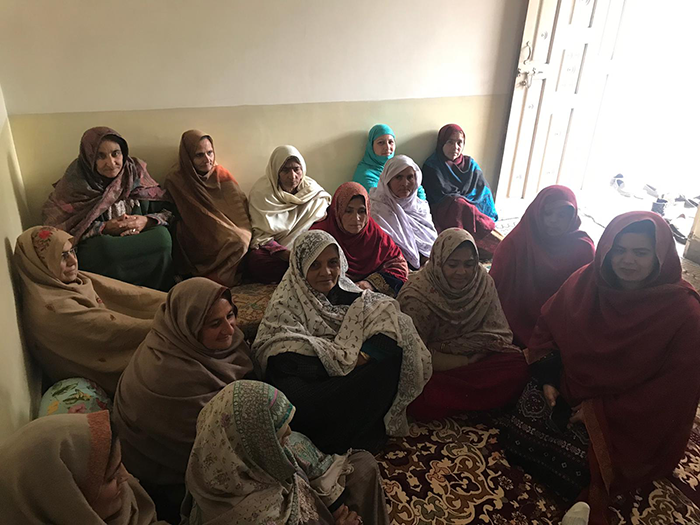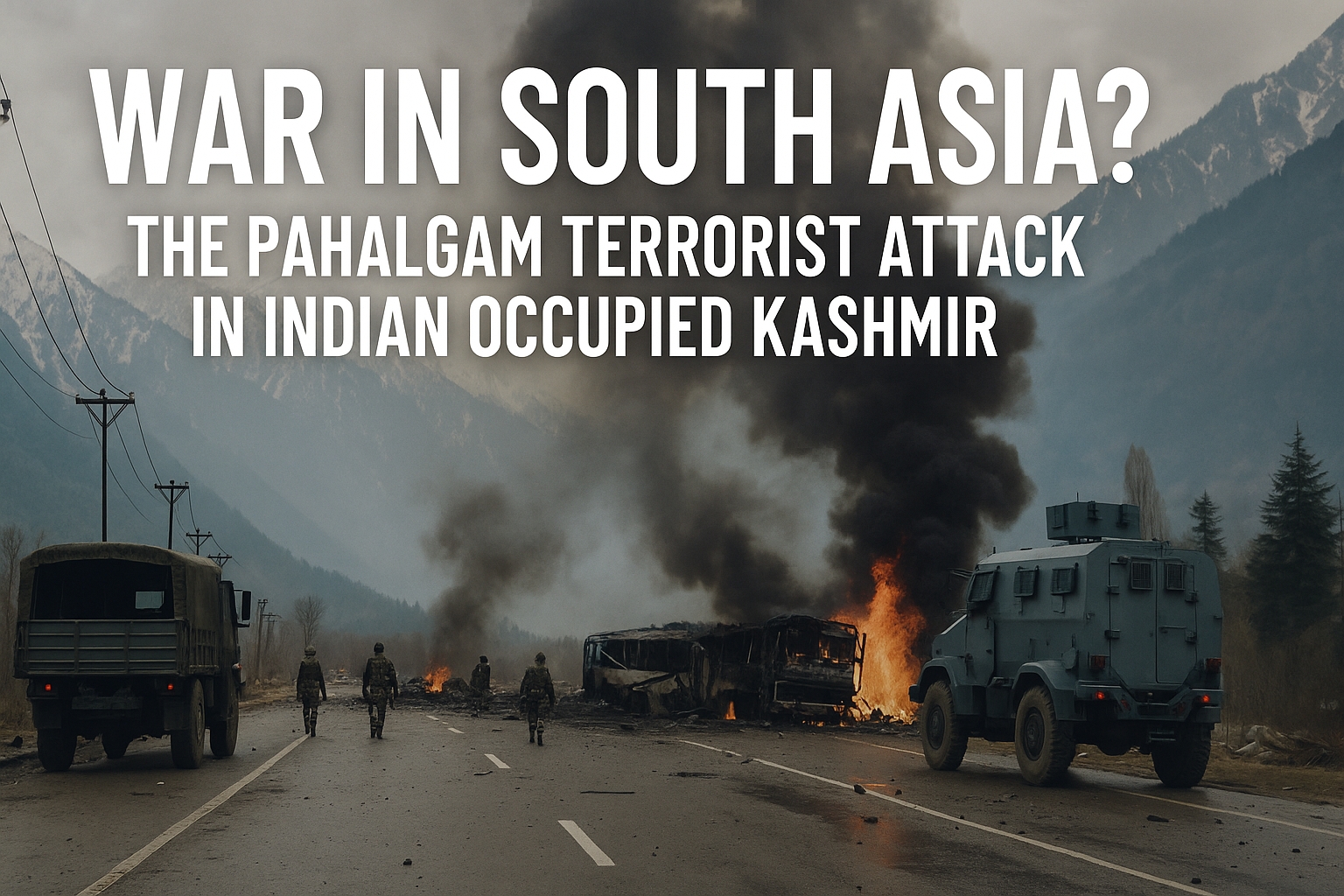At the Line of Control in Kashmir
Civilians not allowed on the Indian side of the LoC
Empowering Weak & OppressedZafar Bangash
Jumada' al-Ula' 06, 1441 2020-01-01
News & Analysis
by Zafar Bangash (News & Analysis, Crescent International Vol. 48, No. 11, Jumada' al-Ula', 1441)
The road from Muzaffarabad, the capital of Azad Jammu and Kashmir (AJK), snakes through some of the most breath-taking scenic areas toward Chakothi, the check point on the Line of Control (LoC) in Kashmir. To the left of the road is the Neelum River, its clear blue flowing majestically toward Muzaffarabad where it meets the Jhelum River at a point called sangam (meeting point). To the right are towering mountains of the Himalayan range where rock falls are common. Some drivers are quite reckless and it is a miracle that vehicles do not plunge into the river below or get into accidents on the twisting road.
Our destination was Chakothi, the last point that divides Azad (Free) Jammu and Kashmir from Indian-colonized Kashmir. As our delegation of four disembarked from our vehicles at Chakothi, we were greeted by Colonel Suhail and two of his staff members, Major Ishtiaq and Major Zahid. They were all dressed in military fatigues. What surprised us was that the officers were unarmed.
Colonel Suhail immediately ushered us into the briefing room. Considering that Indian military posts were visible directly in front of us, the briefing room had large glass windows. We were clearly visible to Indian troops on the other side, which prompted us to ask about our safety. Colonel Suhail smiled and assured us that we were safe, “We have an unwritten understanding with the Indians that whenever there are visitors on either side, there would be no firing.” He then quickly added that while civilians are invited to the Pakistani side of the LoC, the Indians never invite civilians to their side. The only visitors on their side are Indian military personnel. India clearly does not want the world to see what its army is doing in Occupied Kashmir.
We may have made history with our visit to Chakothi. Pakistani and AJK governments frequently bring foreign diplomats, foreign parliamentarians, and even ministers to visit the LoC following egregious crimes by Indian troops, but civil society groups have not been there. We were perhaps the first civilian group with no official affiliation to visit Chakothi.
As Colonel Suhail briefed us about the situation and incidents of Indian firing on Pakistani posts to the north, he also pointed to a bridge just south of the briefing room, “That is the ‘friendship’ bridge. It was opened in 2003 for Kashmiris to go across from either side to meet relatives but last March, India abruptly stopped the bus service. A month later, Indian troops said they wanted to replace the planks on the bridge because they were worn out. They took out the planks on their side of the bridge but never replaced them.”
It was not difficult to surmise India’s evil intentions. This was a prelude to Delhi’s revocation of Occupied Kashmir’s special status that was announced on August 5, 2019. Since then, Indian occupied Kashmir (IOK) with its 8 million inhabitants has been under total lockdown. This is the longest lockdown in history of a people by a country claiming to be a “democracy.” International media outlets are forbidden to enter IOK; independent foreign observers and even Indian opposition leaders are barred from entry as are human rights organizations. Internet and mobile services are shut down. There are reports that 13,000 Kashmiri youth and perhaps as many as 30,000 have been kidnapped by the Indian army and taken to unknown locations. RSS thugs, a bunch of Hindu fascists, have been unleashed in IOK terrorizing people in their homes.
At Chakothi, we also observed another curious phenomenon. There are numerous homes dotting the mountain ridge as it rises on the Pakistani side of Kashmir. There are no homes on the Indian side. The Neelum River separates AJK from IOK along the north-south axis while a small stream beneath the “friendship bridge” separates the east-west axis.
Indian colonial troops frequently resort to heavy weapons fire targeting not only Pakistani military posts but also civilians. While it possesses heavy weapons, Pakistan is constrained by the fact that it cannot retaliate indiscriminately because civilians in Indian-occupied Kashmir are also Kashmiri Muslims. Despite such constraints, Pakistan is able to respond effectively and often, Indian troops raise the white flag asking for a ceasefire following exchange of gunfire.
Our delegation met a number of Kashmiri civilians who had been targeted by Indian troops when their homes or businesses were shelled. Upon inquiry as to why they did not move away to safer grounds, their response was forthright, “This is our land. We will never abandon it no matter how much Indian troops may fire at us.” We learned that civilians living on the mountain ridges facing Indian occupation troops have built underground shelters behind their homes. When shelling starts, they immediately take refuge there.

The sentiment of not abandoning their homes and land was also heard in the refugee camps in AJK. We met a number of elderly women whose sons, husbands, brothers or other relatives were martyred by the Indian troops. These women and their children were forced to flee to AJK. The latest wave of migration occurred following the uprising of 1989. This was the fourth wave of migration since 1947 when India and Pakistan became separate countries (the earlier ones occurred in 1947, 1965 and 1971, all because of the war). There are more than 40,000 refugees from the 1989–1990 wave. They are accommodated in camps in and around Muzaffarabad and other places.
There are five major refugee centres in AJK: Muzaffarabad, Bagh, Kotli, Mirpur, and Rawalakot. The largest concentration of refugees is in and around Muzaffarabad accommodating more than 27,000 refugees. The quality of accommodation ranges from fairly modest (Ambore camps) to very impressive (Thotha camp). The latter is a model camp with neat rows of houses and all amenities: light, gas, water, schools etc.
Each refugee gets Rs.2,000/mo. While this is paltry, given that there are usually five or six members per family, the amount is respectable even if low. Housing, electricity, schooling, and medical facilities are free. Women are encouraged to develop cottage industries such as embroidery, handicraft, and other skills for which Kashmir is famous. Over the years, many youth from the camps have completed their studies and become doctors, engineers, accountants, and teachers.
Refugee camps are far away from the Chakothi check point and thus not vulnerable to Indian shelling. Our visit to Chakothi, however, was an eye-opener and provided a much clearer perspective of India’s evil designs.


